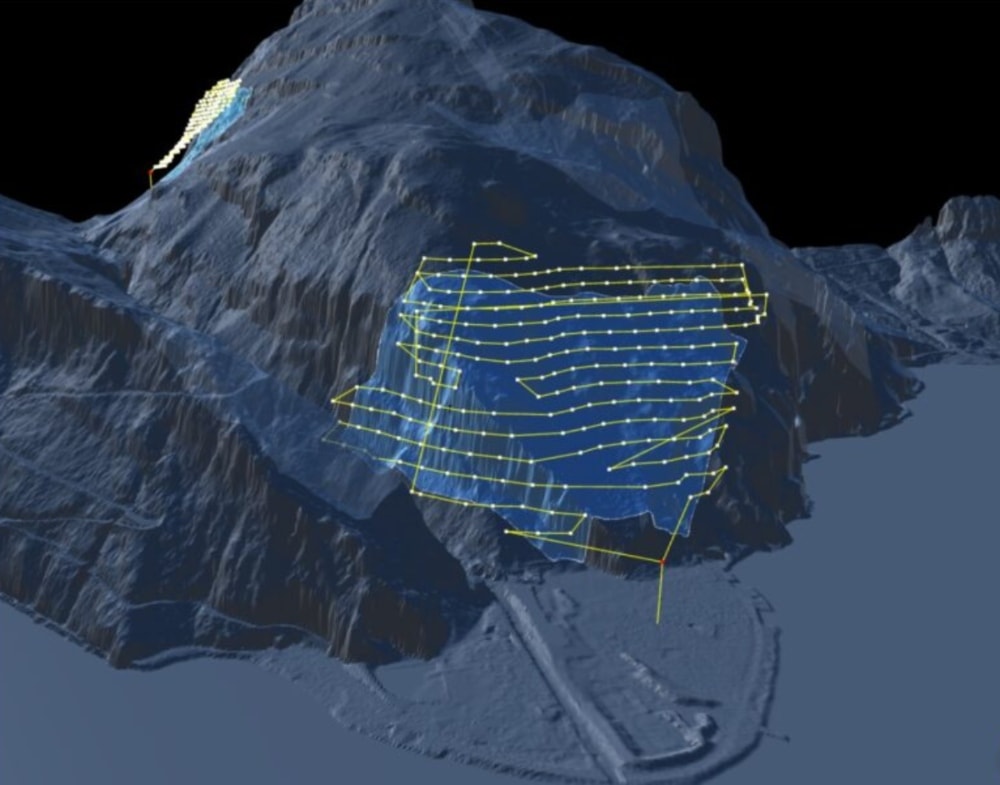How Are Drones Being Used on the Job Site? DroneII’s 2021 Report Looks at How Drone Applications Are Revolutionizing Business
BY Zacc Dukowitz
13 May 2021A new report from Drone Industry Insights (DroneII) details the top ways that drones are being used for work today.
In addition to looking at the top commercial applications for drones overall, the report also looks closely at the top ways that different sectors use drones in their work, diving into the details of how industries like Energy and Construction are most commonly using drones on the job site.

Image credit: Flyability
One interesting finding from the report is that although drone applications are growing like crazy—the report includes 237 different ways that drones are currently being used for work—there are likely even more ways they could be used that just haven’t been thought of or tested yet.
A drone today is a bit like what a smartphone was just over a decade ago: a well-known device but widely underestimated in terms of innovation and business potential.
– DroneII 2021 Drone Applications Report
Findings from DroneII’s Report
This chart sums up the findings from DroneII’s industry applications report:

Image credit: DroneII
Here are our key takeaways from the data:
One Main Use Per Industry
Almost all industries are using drones primarily in just one way.
This could mean that a specific application is the best one for that industry or it could mean that new applications haven’t yet been developed. Either way, it’s interesting to see that most industries have honed in on a single use case—and this data could be gold for drone startups looking for promising new niches.
Mapping/Surveying and Inspections Dominate
The two biggest commercial uses for drones are mapping/surveying and inspections, with photography/filming a distant third.
This data turns the classic idea of drone work being primarily in aerial videography/photography on its head, showing that commercial drones have taken a firm position as tools for work.
Software Central to Drone Work
Software has a primary role in how drones are being used.
Although this finding isn’t explicitly present in the data, both mapping/surveying and inspections require post-processing and specialized software to create usable outputs from raw drone data.
And more drone-specific and industry-specific software is being released every day. Just a few weeks back, for example, Flyability released software made only for inspectors, which was made to help them pinpoint the location of defects found in the visual data they collect by drone.
. . . But a Drone Is Still Primarily a Flying Camera
We wouldn’t want to say a drone is “just” a flying camera—there are many different drones out there that provide different types and quality levels of visual data for different types of work.
Although these drones are used primarily to capture visual data—that is, they are still flying cameras—they have been created through years of deliberate research and are highly sophisticated pieces of equipment.
Of course, much of this visual data isn’t useful until it’s processed with specialized software, as noted above.
In some instances, the software is an important part of the visual data collection itself. For example, Drone Harmony’s Hill Scan flies a drone in a specific automated pattern over hilly and mountainous areas, optimizing the drone’s data collection for mapping these difficult types of terrain.

Image credit: Drone Harmony
What’s Next—Increased Specialization in Hardware and Software
While DJI continues to dominate the consumer drone market, we’ve seen some companies who focus on specific industries or use cases find a foothold and opportunities for growth.

Flyability’s Elios 2 being used to conduct an internal inspection
Examples of this approach include senseFly’s eBee Classic made just for mapping, Flyability’s Elios 2 made just for indoor inspections, and recent startups making drones focused on tasks as diverse as picking fruit, herding livestock, and detecting landmines.
All of these companies have carved out niches for themselves, as have several other UAVs focused on specific types of work.
And there are certainly more niches to be filled—in fact, the data in DroneII’s report could help guide emerging drone companies looking for a likely niche where a specific type of drone might be successful.
Along with new drones for specific niches, we’ll probably also see software made for specific types of work proliferate over the next several years. 3DR was one of the first companies to launch industry-specific software, with its Site Scan for construction work, but several others have come out since then.
In fact, in the coming years, it’s likely that commercial drone adoption may be driven as much by specialized software as by specialized hardware.


